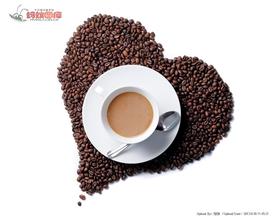Introduction to the bitter, fragrant and delicious coffee flavor and taste of La Tisa Manor in Guatemala
From 1871 to 1944, the country began to devote itself to economic modernization. At the same time, the United Fruit Company, which is dominated by the United States, has also begun to buy large coffee and banana estates in Guatemala and intervene in Guatemalan politics. After the revolution in October 1944, the former dictator was overthrown, Guatemala implemented democracy and freedom of expression, and the first law in Guatemalan history to protect the interests of workers came into force. [7] Guatemala began the process of democratization. [1]
Between 1950 and 1954, the ruling president Jacobo Abens implemented land reform, when big landlords, who accounted for 2 per cent of the country's population, owned about 70 per cent of the country's arable land. Arbens wrote a check for land reform, promising to buy the land held by the big landlords and redistribute it to small farmers. Arbens won the election, and the land reform plan was carried out immediately. Landlords who own more than 223 acres of land will be expropriated as long as there is land not used for production. In the end, an average of 4300 acres of land was expropriated from 1059 farms, and about 100, 000 farmers were granted ownership of the land. In December 1996, the Government of Arzu (National Vanguard Party) and the National Revolutionary Alliance of Guatemala reached a "final peace agreement", which officially ended 36 years of civil strife in Guatemala. [1]
In 1996, the 36-year guerrilla war ended by signing a peace treaty. [7]
In the general election in Guatemala on November 9, 2003, Oscar Berhe, the candidate of the National Grand League, was elected president, and the National Grand League is the most powerful party in Congress. The participation rate is 54.5%. [7]
On September 9, 2007, presidential and congressional elections. Otto Perez Molina and Alvaro Colom entered the second round of voting in the presidential election. At 10:00 that evening (local time), the Central Election Commission announced that Colom had won by 5.4%, becoming Guatemala's first left-wing president in 53 years.
On November 6, 2011, in the second round of voting in the general election in Guatemala, Otto Perez Molina, on behalf of the Patriotic Party, defeated LIDER member Manuel Baldison with 54.48% of the vote, becoming the 48th president of Guatemala.
This is the Dursai Sea area in the Agua volcanic region of Antigua, Guatemala. 100% Arabica coffee beans are grown in this area, and its branches are mainly bourbon, Tippika, Kaduai and Kaddura. There are also a small number of yellow bourbon, rose and Pacamara and other varieties. Antigua is a famous producer of coffee. Antigua coffee is produced in Hacienda Carmona, where the best quality coffee is EL Pulcal, which is not only of good quality, but also has a stronger flavor, richer taste and stronger tobacco flavor than other Guatemalan coffee. Every 30 years or so, the area near Antigua is hit by a volcanic eruption, which provides more nitrogen to the already fertile land, and sufficient rainfall and sunlight make the place more suitable for growing coffee. Its coffee belt is distributed over 1500 meters, between 14 and 16 degrees north latitude, and it is most easy to grow very hard beans, all of which are washed, of which 45% belong to fine grade, the proportion is quite high. Guatemala extremely hard beans are elegant and sour, clean and odorless, layered, as well as sour green apples, berries, jasmine, orange peel, green pepper and sour fruit. Sweetness, chocolate sweetness, and even a smoky finish. The taste is bitter and fragrant. Guatemala has seven major coffee producing areas: Antigua,Coban,Atitlan,Huehuetenango,Fraijanes,Oriente and San Marcos.
The coffee beans in each producing area have their own characteristics, and they have won a lot of praise for Guatemala in the international community, especially the perfect coordination of the sour, sweet and mellow texture of Antigua; with a touch of smoke and a little more emphasis on its mystery, you will have a reason not to look for alternatives everywhere after tasting.
Guatemalan coffee beans are mostly cultivated in high-altitude volcanic soils belonging to the most advanced Arabica varieties. Due to the long ripening period, the beans are medium and dense (Guatemalan coffee beans are graded not on the basis of particle size, but on the basis of shortcomings), and the bean color is dark turquoise. The unique sour taste of fragrance, mellow, sweetness and freshness is characterized by the aroma and taste of coffee beans hidden in its sour taste. Therefore, coffee beans with this characteristic can be called first-class coffee beans. The name of the product is suitable for the taste characteristics of baking degree.

Important Notice :
前街咖啡 FrontStreet Coffee has moved to new addredd:
FrontStreet Coffee Address: 315,Donghua East Road,GuangZhou
Tel:020 38364473
- Prev

The most unique Sweet Coffee in Indonesia Fuyin Manor Coffee Flavor and Taste introduction
In the 15th century, Portugal, Spain and Britain invaded successively. The Dutch invaded in 1596, the East India Company with government authority was established in 1602, and the colonial government was established at the end of 1799. Japan occupied Indonesia in 1942. After Japan surrendered in 1945, Indonesia broke out the August Revolution. On August 17, 1945, it declared its independence and established the Republic of Indonesia. After Indonesia became independent, it successively used military force.
- Next

Introduction to the flavor and taste of coffee from Incht Manor, Guatemala.
From the 4th century to the 11th century, the Patten low Guatemalan region of Guatemala was the center of ancient Indian Mayan culture, and the ruins of many pyramids and cities left over from this period are still visible today. [7] at the end of the 11th century, Mayan culture still existed in the central highlands after the Mayan culture in the lowlands of Guatemala was eliminated. [7] 1523, West
Related
- Does Rose Summer choose Blue, Green or Red? Detailed explanation of Rose Summer Coffee plots and Classification in Panamanian Jade Manor
- What is the difference between the origin, producing area, processing plant, cooperative and manor of coffee beans?
- How fine does the espresso powder fit? how to grind the espresso?
- Sca coffee roasting degree color card coffee roasting degree 8 roasting color values what do you mean?
- The practice of lattes: how to make lattes at home
- Introduction to Indonesian Fine Coffee beans-- Java Coffee producing area of Indonesian Arabica Coffee
- How much will the flavor of light and medium roasted rose summer be expressed? What baking level is rose summer suitable for?
- Introduction to the characteristics of washing, sun-drying or wet-planing coffee commonly used in Mantenin, Indonesia
- Price characteristics of Arabica Coffee Bean Starbucks introduction to Manning Coffee Bean Taste producing area Variety Manor
- What is the authentic Yega flavor? What are the flavor characteristics of the really excellent Yejasuffi coffee beans?

